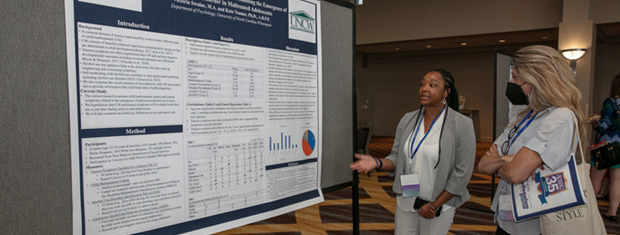




The APSAC Advisor is a peer reviewed quarterly news journal for professionals in the field of child abuse and neglect.
The APSAC Advisor provides succinct, data-based, practice-oriented articles that keep interdisciplinary professionals
informed of the latest developments in policy and practice the field of child maltreatment. It is designed to highlight
best practices in the field and publish original articles and current information about child maltreatment for professionals
from a variety of backgrounds including medicine, law, law enforcement, social work, child protective services, psychology,
public health and prevention in the U.S.
 If you wish to learn more about submitting an article to the Advisor, please click here.
If you wish to learn more about submitting an article to the Advisor, please click here.
This library contains Advisor issues dating back to the first issue in 1988. The most recent issue appears at the top.
Scroll down to select past issues by year and issue number. Once a publication appears in the box, you
can use the Enlarge button to open the document in a new window or tab (depending on how your browser is set up).
This will allow you to view the document with larger print.
To print a document, first use the Enlarge button to open the document in a new window or tab. Then use your browser's Print command.
To return here from a new tab, close the tab. To return from a new window, click your browser's Back button.
In the listing below, click on a year and issue number to see the articles in that publication.
2017 Number 2
This article discusses poverty and inequality in the contexts of both the home and early educational environments, demonstrates the promising results and inherent challenges of early intervention programs, and highlights the need for population-level approaches to truly produce far-reaching and long-lasting changes needed to help all children thrive.
The Forgotten Victims: Children of Incarcerated Parents
The rate of incarceration in the United States has quadrupled in the last four decades and approximately 1.7 million children have a parent incarcerated in a state or federal prison. Parental incarceration is an adverse childhood experience that increases a child’s risk for experiencing negative outcomes. The body of literature that examines the impact of parental incarceration is limited, and this uniquely vulnerable population has received less attention and is not well understood. The purpose of this article is to provide an overview of the impact of parental incarceration on children, discuss risk factors that may modify outcomes, and highlight future directions for researchers, policy makers, healthcare providers, schools, and community-based organizations.
Understanding Juvenile Probation Officers
This article highlights the results of a recent survey of more than 1,700 juvenile probation officers (JPOs) nationwide. The survey was conducted by the National Child Traumatic Stress Network’s Justice Consortium for the purposes of better understanding the knowledge level of trauma among JPOs and how mental health professionals can best work with them. The court system is a common entry point for youth who have experienced trauma, and probation is the most common court order for first time juvenile offenders. The Office of Juvenile Justice Delinquency and prevention refers to juvenile probation as the "work horse of the juvenile justice system." Thus, it is crucial to support JPOs using sound trauma-informed practices.
Rethink the Label Insular Communities When Referring to Child Abuse
Accurate terminology and definitions are essential in social science research. It is highly stereotyping, demeaning, and offensive to broadly label communities of color and religious communities as insular when referring to child abuse in those populations. Whether purposely or unwittingly, stereotypes are a shorthand way to overgeneralize and reinforce negative views about particular groups.
An Education Agenda for Those Who Need It Most
One of the most pressing challenges our country faces is the persistently huge disparity in academic achievement between children growing up in poor, underserved communities and children in communities with the resources to meet their educational and developmental needs. That education gap is even wider for children who are also members of our most fragile student population: those in the child welfare system. We believe education is the best path toward a successful future for these children, and, after keeping them safe and healthy, education should be our highest priority. Although widespread educational solutions have been a challenge thus far, several programs now offer great promise and, perhaps, a roadmap forward.
Threats to the Medically Complex Child
The maltreatment of children in the United States today has reached alarming rates, and estimates range from 1 in 8 children by 18 years old. Specific subpopulations of children are reported to have increased rates of maltreatment. One group is children with special health care needs. Fourteen percent of children in the United States today have a condition with chronic physical, developmental, behavioral, or emotional needs, and 22% of households with children include at least one child with special needs. Medically complex children are the most vulnerable of special-needs children and have the greatest risk for maltreatment. This article describes the prevalence and characteristics of abuse, neglect, and maltreatment in this vulnerable population.
APSAC Advisor 29(2): Full Issue